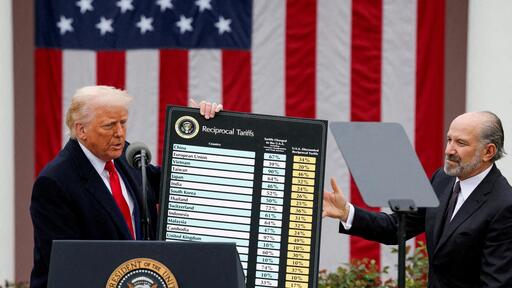A U.S. civil court ruled this week that former President Donald Trump’s broad use of tariffs under the International Emergency Economic Powers Act( IEEPA) exceeded his indigenous authority. The court emphasized that only Congress has the power to regulate transnational commerce — a major blow to unilateral tariff powers.
This ruling could reshape the future of U.S. trade policy. It was ate by investors, driving a swell in global stock requests. still, legal experts note that other tools, like Section 232( public security) or Section 301( trade violations), could still be used by unborn administrations.
In a affiliated development, Trump’s proposed budget includes Section 899 — a clause that would put new levies on foreign investments in U.S. means. Judges advise this could drive down capital, weaken the bone
, and increase U.S. borrowing costs.
🇨🇳 China
- 2018–2019: Assessed tariffs on over$ 250 billion worth of Chinese goods, with rates ranging from 10 to 25, under Section 301 of the Trade Act of 1974.
- 2025: Introduced a 10 tariff on all significances from China in February, which increased to 20 in March. By April, tariffs escalated to 145 on utmost Chinese significances, citing public security and fentanyl enterprises.
🇨🇦 Canada & 🇲🇽 Mexico
- 2025: enforced 25 tariffs on significances from Canada and Mexico under the International Emergency Economic Powers Act( IEEPA), with certain immunity for Canadian energy products at a reduced rate of 10.
🇪🇺 European Union
- 2025: blazoned plans to put 25 tariffs on significances from the European Union. On April 2, specified a “ complementary ” tariff rate of 20 on EU significances.
🇻🇪 Venezuela
- 2025:2025 inked Administrative Order 14245, assessing a 25 tariff on all goods imported into the United States from any country that imports Venezuelan oil painting, effective April 2.
🇯🇵 Japan
- Subject to steel and aluminum tariffs under Section 232
- Also impacted by the universal 10% tariff in April 2025
🇰🇷 South Korea
- Steel exports to the U.S. were limited as part of a share system (to avoid tariffs)
- Still affected by the 2025 universal tariff policy
Universal Tariffs
- 2025 On April 2, blazoned a universal 10 tariff on nearly every country, with advanced rates on 57 other countries. The 10 tariffs took effect on April 5, and the variable tariffs on other countries took effect on April 9.
Product-Specific Tariffs
- Steel and Aluminum: Increased tariffs to 25% on steel and aluminum significantly, expanding the list of secondary papers and ending being immunity.
- Automobiles: Announced 25% tariffs on auto imports in the beginning of April 2, 2025, under Section 232, citing national security concerns.
- Semiconductors and Pharmaceuticals: Proposed tariffs of “25 percent and advanced” on computer chips, semiconductors, and medicinals.
- Copper and Lumber: Directed examinations to assess whether tariffs on imported copper, timber, and timber are necessary, citing public security enterprises.

